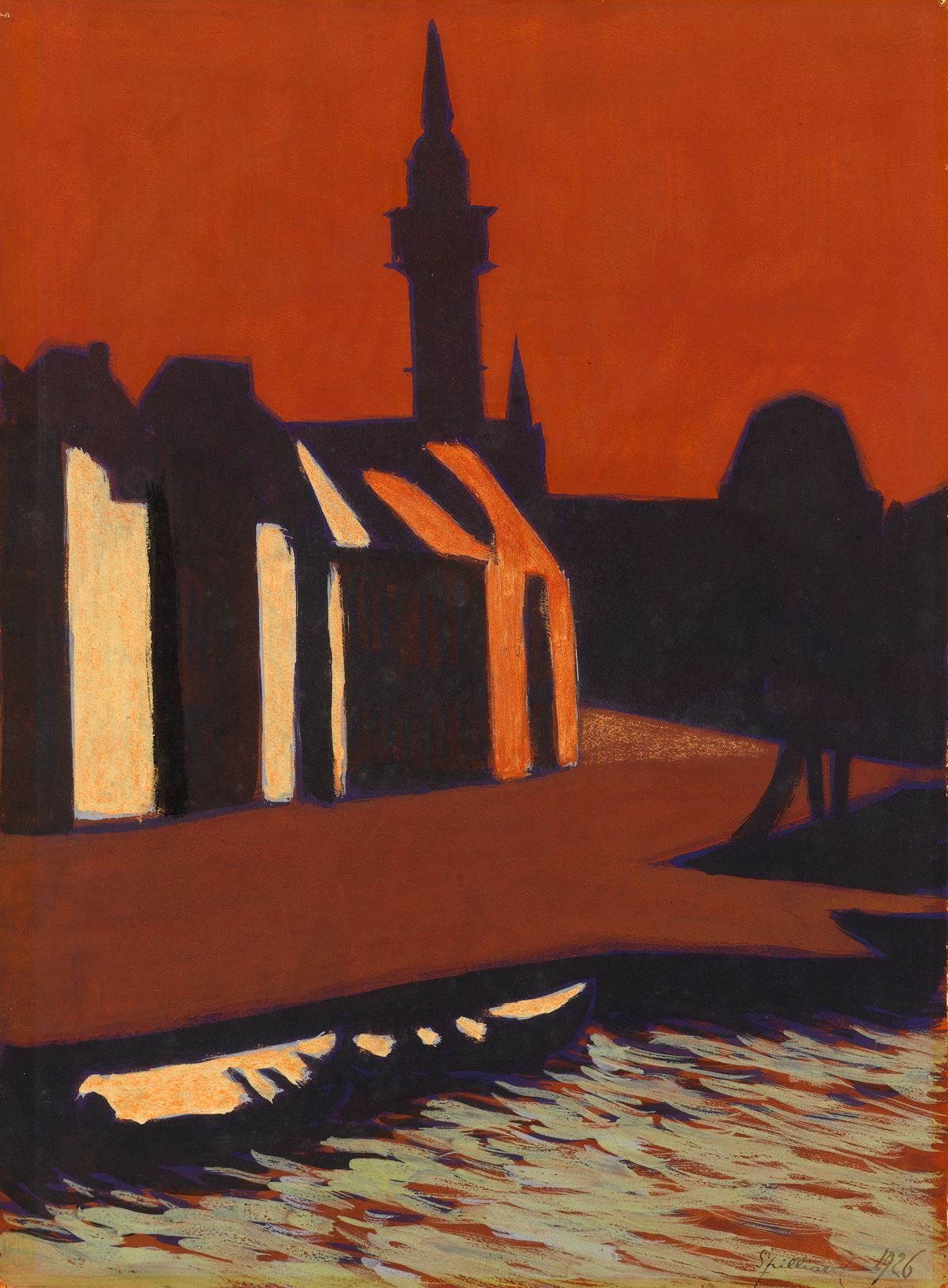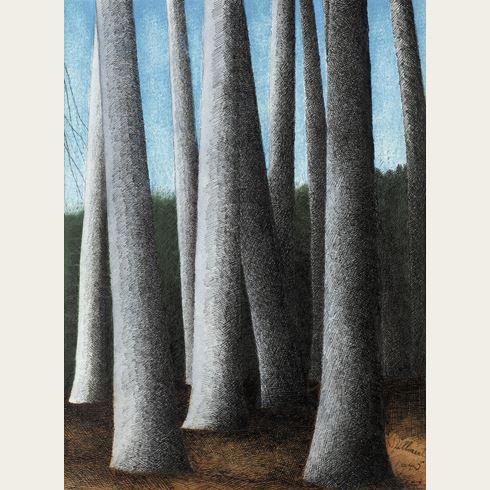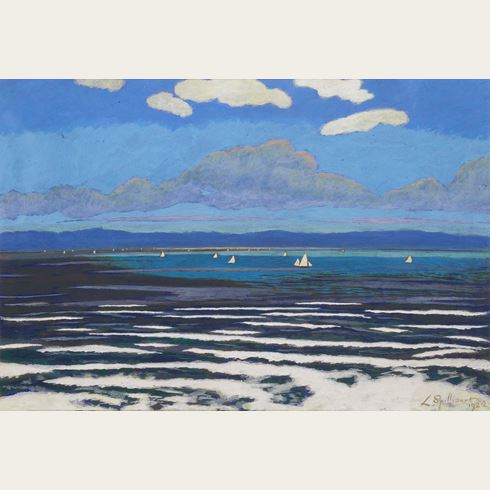Léon SPILLIAERT
(Ostend 1881 - Brussels 1946)
The Commercial Port of Ostend
Sold
Gouache and watercolour on paper.
Signed and dated Spilliaert 1926 at the lower right.
349 x 258 mm. (13 3/4 x 10 1/8 in.)
Signed and dated Spilliaert 1926 at the lower right.
349 x 258 mm. (13 3/4 x 10 1/8 in.)
This gouache drawing depicts the Quai de la Commerce, the Pilotage building and the Gare Maritime in Ostend. The three commercial docks in Ostend were built and developed in the 18th and 19th centuries, and by the early years of the 20th century the area around them housed warehouses, wharves, factories, hotels and a railway station. In 1924 Spilliaert moved to a studio on the second floor of a building on the Amsterdamstraat, with a view overlooking the port. In his sketchbooks, he made a large number of drawings of the buildings and quays of the commercial docks, and these appear in several finished drawings of this period. However, as Norbert Hostyn has noted, ‘He rarely represents [the docks] in their reality: he plays with topographical elements from their surroundings: the two sturdy railway station towers and the metal railway station roof, the slender tower of the pilotage building as well as other buildings. He displaced and rearranged them and thus made contemporary capriccios with them.’
Among other drawings of the commercial port of Ostend are a large watercolour view of The Commercial Docks and the Gare Maritime of 1924, in the Musées Royaux des Beaux-Arts de Belgique in Brussels and an even larger gouache, pastel and ink drawing of The Commercial Docks in Ostend of the same date, in the collection of the Vlaamse Gemeenschap in Belgium.
Among other drawings of the commercial port of Ostend are a large watercolour view of The Commercial Docks and the Gare Maritime of 1924, in the Musées Royaux des Beaux-Arts de Belgique in Brussels and an even larger gouache, pastel and ink drawing of The Commercial Docks in Ostend of the same date, in the collection of the Vlaamse Gemeenschap in Belgium.
The son of a wealthy perfumer, Léon Spilliaert from an early age suffered from acute anxiety, stomach disorders and insomnia. An introspective and sensitive youth, he would wander the deserted streets, quays and beaches of his native Ostend throughout the evening, and in later years produced countless drawings, pastels and watercolours of the fog-bound city at night. Having shown a talent for drawing from an early age, Spilliaert was largely self-taught as an artist, his only formal training being a few months at the Academy in Bruges. At the age of twenty-one he was employed by the publisher and collector Edmond Deman as an assistant, and settled in Brussels. Deman was to become the young Spilliaert’s mentor and champion, nurturing his talent and introducing him to the flourishing artistic scene in Brussels. At the end of January 1904 Spilliaert travelled to Paris, bearing a letter of introduction from Deman to the Belgian poet Emile Verhaeren, who bought some of Spilliaert’s works and further encouraged him. After a few months he returned to Ostend, although he would travel to Paris each winter for several years.
Only a handful of local collectors were aware of Spilliaert’s work, and it was not until 1908 and 1909 that he first exhibited his drawings in public. By the end of 1909 one art critic had described him in an Ostend newspaper as ‘still almost unknown, shrouded in proud modesty and disdainful of advertising, the young Oostende aquarellist Léon Spilliaert is a great, a very great artist.’ Spilliaert continued to take part in local exhibitions, and became a member of several artists groups, alongside such painters as James Ensor and Constant Permeke. By 1912 Spilliaert had become better known, and was invited to take part in a number of avant-garde exhibitions. In 1920, along with Ensor, Permeke and Gustave de Smet, he became a founder member of the Sélection group in Brussels, exhibiting regularly with them and contributing covers and illustrations to its magazine. Apart from a few years in Brussels, he spent most of his career in Ostend, and views of the port town and its surrounding coastline came to dominate his output.
Léon Spilliaert remains best known today as a virtuoso draughtsman, and indeed drawings were his chief mode of expression throughout his career. Executed in pastel, gouache, Indian ink and wash or watercolour, his drawings are remarkable examples of original and inventive visual imagery that can perhaps best be described as Symbolist. The subject matter of his drawings included urban views – almost always depicted at night, and usually devoid of people - landscapes and seascapes, interiors, still-lives and, not least, a series of intensely introspective self portraits.
Provenance
Purchased from the artist by Abraham Lauffer, Ostend, c.1926
His wife, Antoinette Lauffer-Rottersman, New York, until 1956
By descent to Georges Lauffer, Paterson, NJ and Laguna Hills, CA, until c.1990
Thence by descent to Robert Lauffer, El Sobrante, CA, until 2012.
Literature
To be included in the forthcoming catalogue raisonné of the artist’s work by Anne Adriaens-Pannier.






